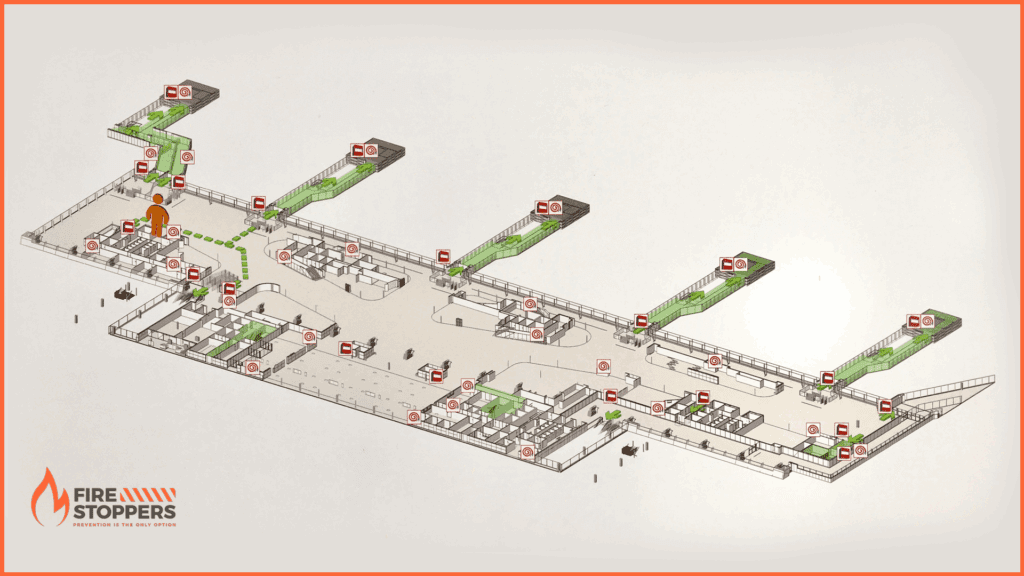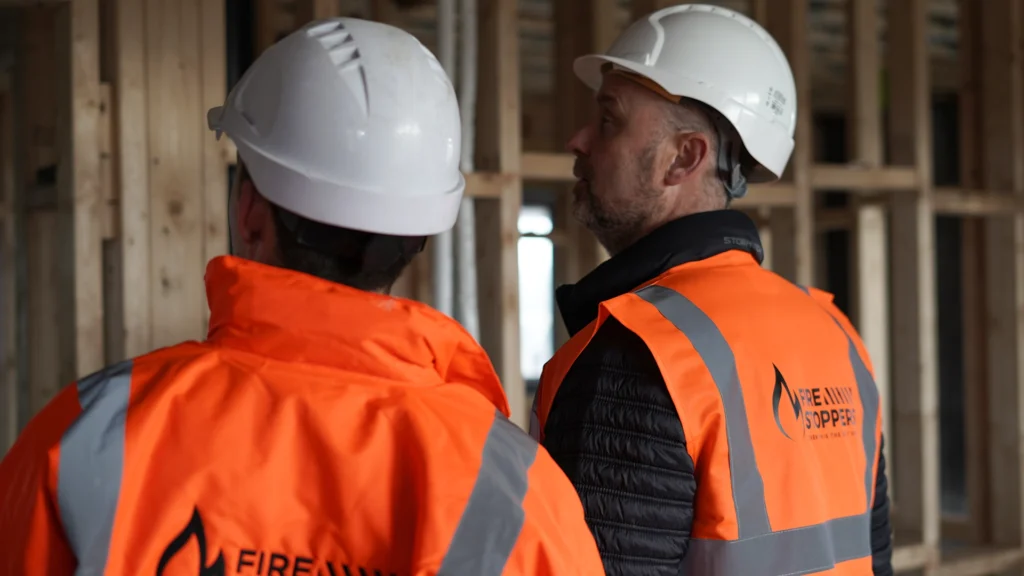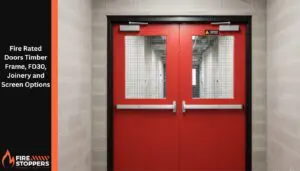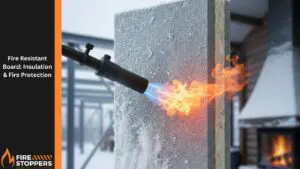Seconds count when fire strikes. Is your Irish business truly prepared? The foundation of effective fire safety rests on two critical pillars: meticulous Pre-Fire Planning and ongoing, robust Fire Safety Training. These aren’t just items on a compliance checklist; they are fundamental to protecting lives, safeguarding your property, and ensuring your business can weather any storm. At Firestoppers, our IFC-certified engineers bring over two decades of frontline experience in passive fire protection across Ireland. We understand that proactive preparation is your strongest defence.
This guide will clearly outline why pre-fire planning and fire safety training are essential for every Irish workplace, what your legal duties entail, how to implement them effectively, and how these practices, supported by robust passive fire protection systems, create a truly resilient environment.
The risk of workplace fires in Ireland necessitates constant vigilance. Overall fire incident data from the Department of Housing, Local Government and Heritage (such as the 19,790 fire call-outs in 2022) underscores this. More importantly, the Health and Safety Authority (HSA) consistently emphasizes the employer’s duty to prepare for emergencies. Investing in prevention is always more prudent than facing the devastating aftermath of a fire.

Table of Contents
Your Legal Compass: Navigating Irish Fire Safety Regulations
In Ireland, a comprehensive legal framework underpins your fire safety responsibilities. Designating a Responsible Person for fire safety management in your premises is a key starting point. Their duties include understanding and ensuring compliance with:
- The Safety, Health and Welfare at Work Act 2005: This cornerstone legislation mandates employers to ensure employee safety. Section 11 specifically requires robust emergency plans, including firefighting measures, evacuation procedures, and adequate staff training.
- The Fire Services Act 1981 (and 2003 amendment): This Act obliges those in control of premises to take all reasonable measures to prevent fire outbreaks and ensure occupant safety.
- The Building Control Act 1990 to 2023 and associated Building Regulations (including Technical Guidance Document B – Fire Safety): These dictate fire safety standards for building design, construction, and material alterations. It’s crucial to stay updated on the latest amendments, as these can impact requirements for fire safety certificates, especially concerning material changes of use in various building types, including industrial and care facilities. For a broader overview, consult our guide on fire safety regulations in Ireland.
- The Safety, Health and Welfare at Work (General Application) Regulations 2007 (as amended): These detail specifics on emergency routes, exits, fire detection, and firefighting equipment.
These laws mean you must conduct regular fire risk assessments, develop comprehensive emergency plans, provide and maintain fire safety equipment and building features (like compliant fire doors), and train your people effectively, keeping meticulous records of all activities.

Strategic Defence: The Power of Pre-Fire Planning in Ireland
Pre-fire planning is the crucial process of developing a detailed, site-specific strategy to manage a fire incident before it happens. It involves a deep understanding of your building, potential risks, and a clear, actionable response plan.
Key elements of effective pre-fire planning include:
- Comprehensive Fire Risk Assessment: This is the foundation. It should be conducted by a competent person and reviewed at least annually, or whenever significant changes occur in building layout, occupancy, processes, or following a fire incident. For complex or high-risk premises, consider engaging external, accredited fire risk assessors. Your assessment should identify specific risks, including the storage and handling of any hazardous materials, with this information clearly documented.
- Developing a Clear Workplace Fire Evacuation Plan: This documented procedure must detail escape routes (primary and alternative), assembly points, and specific procedures for all occupants, including assistance for vulnerable individuals. Learn more about crafting an effective workplace fire evacuation plan.
- Accessible Plan Documentation: Your pre-fire plan, including clear, possibly color-coded site maps, should be readily accessible in both hard copy and digital formats for your staff and first responders.
- Liaison with Local Fire Services: It is highly recommended to share your pre-fire plan with your local fire service and update them on any significant changes. This can greatly assist their operational response.
- Mapping Critical Systems & Controls: Clearly identify and mark the location of fire alarm control panels, utility shut-offs, and any built-in fire suppression systems.
- Regular Review and Drills: Your plan is a living document. Test its effectiveness through regular fire drills and update it promptly after any building modifications or procedural changes. This is especially vital when undertaking fire upgrade works.
Effective pre-planning also considers how the building itself will perform, emphasizing the importance of passive fire protection in maintaining escape routes and containing fire.

Empowering Your People: Essential Fire Safety Training in Ireland
Irish law mandates that employers provide all employees with adequate fire safety training. This isn’t a one-off event but an ongoing commitment.
Core components of fire safety training should cover:
- Induction and Refresher Training: All staff must receive fire safety training upon starting (induction) and at least annually thereafter.
- Specific Equipment Training: Training on the correct use of fire extinguishers should be provided, with refresher training typically recommended every three years or as indicated by your risk assessment, in line with best practice and HSA guidance.
- Understanding Fire Risks & Prevention: Educating staff on common workplace fire hazards and proactive how to prevent fires in the workplace measures. This includes awareness of any specific hazardous materials on site.
- Emergency Response Procedures: Clear instruction on raising the alarm, emergency contacts, and executing the evacuation plan.
- Fire Warden Responsibilities: Specialized, more in-depth training for designated fire wardens, outlining their crucial role in pre-emergency checks, managing evacuations, and liaising with emergency services. Clear delegation of these duties is essential.
- Record Keeping: Maintain detailed records of all fire safety training provided to staff, including dates, content, and attendee lists. These records are vital for demonstrating compliance.
- Practical Drills: Conduct regular fire drills (at least twice a year is common practice for many businesses) to test the effectiveness of your plan and training. Record the outcomes and any lessons learned.
Well-trained staff, led by competent fire wardens, are your first line of active defence. Their confident, informed actions during an emergency, supported by reliable building safety features, can dramatically improve outcomes.

The Critical Link: How Passive Fire Protection Underpins Your Preparedness
Your pre-fire plans and safety training rely on the building’s inherent ability to resist fire and protect escape routes. This is the domain of Passive Fire Protection (PFP).
PFP measures, such as intumescent coatings for steel, correctly installed fire stopping products around service penetrations, and robust compartmentation, are designed to contain fire and smoke, buying precious time.
- Supporting Pre-Fire Planning: Knowing your plan accounts for reliable fire compartmentation means escape routes are more likely to remain tenable.
- Enhancing Fire Safety Training: Training is more impactful when employees understand the building itself has features designed to protect them.
- PFP Maintenance is Key: Implement a formal, scheduled maintenance program for all PFP elements. This includes regular inspections by competent personnel and prompt repair or replacement of any damaged components (e.g., damaged fire doors, breached fire seals). Consider periodic third-party audits of your PFP systems by accredited specialists like Firestoppers to ensure ongoing compliance and effectiveness.
Ensuring your PFP is correctly specified, installed by certified professionals, and diligently maintained is crucial. Avoid the dangers of substandard firestopping by always using accredited experts.
Fostering a Positive Fire Safety Culture
Beyond formal plans and training, promote a proactive culture of fire safety:
- Clear Communication: Regularly communicate fire safety information and updates to all staff.
- Visible Signage: Ensure clear and compliant fire safety signage for escape routes, fire exits, assembly points, and firefighting equipment.
- Hazard Reporting: Encourage staff to report any fire hazards or concerns promptly through established channels, without fear of reprisal.
- Lead by Example: Management commitment to fire safety sets the tone for the entire organization.
Key Takeaways for Your Business’s Fire Safety Strategy:
- Appoint a Responsible Person: Clearly assign overall responsibility for fire safety management.
- Conduct Regular, Thorough Fire Risk Assessments: Review annually or when significant changes occur.
- Develop Detailed, Accessible Pre-Fire Plans: Share with local fire services and update regularly.
- Implement Comprehensive Fire Safety Training: Ensure induction, annual refreshers, specialist training (e.g., extinguishers, fire wardens), and meticulous record-keeping.
- Maintain All Fire Safety Measures: This includes both active systems and a dedicated maintenance schedule for passive fire protection elements.
- Promote a Proactive Safety Culture: Encourage staff involvement and vigilance.
As our Senior Passive Fire Consultant, John Murphy, BEng (Fire Safety Eng.), Cert FIRAS, often emphasizes, “A truly fire-safe environment is achieved when robust physical protections, like certified passive fire protection, are seamlessly integrated with well-rehearsed emergency plans and a workforce empowered by thorough training.”
Ready to Strengthen Your Fire Defences?
Effective pre-fire planning and fire safety training, underpinned by correctly installed and certified passive fire protection, are your best defence against the threat of fire. Don’t leave safety to chance.
Need expert guidance? Talk to a Firestoppers fire safety engineer today. Call us on 01 816 5587 or request a free site survey. We provide comprehensive passive fire safety audits and FIRAS-certified installations, helping businesses across Ireland achieve compliance and peace of mind.
Legal & Accuracy Disclaimer
This article is provided for general informational purposes only and does not constitute legal advice or replace the need for a professional fire safety survey tailored to your specific building. Always consult the latest Irish legislation (including the Building Control Act 1990 to 2023 and any subsequent amendments), official guidance from the Health and Safety Authority (www.hsa.ie), your local authority fire services, and seek certified professional advice. Training frequencies mentioned are common best practices and should be verified against your specific risk assessment and legal requirements.



